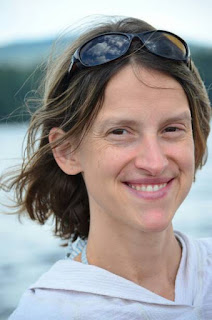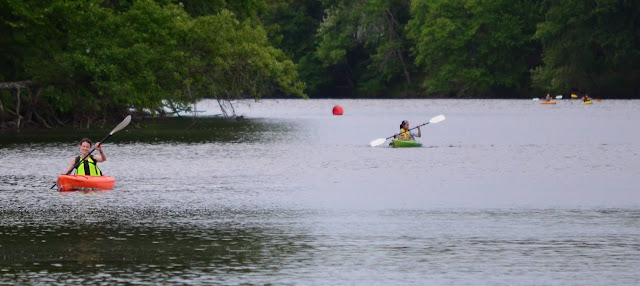Long time Harvard Forest Schoolyard Ecology Educators, Kate Bennett and Tiffany Davis, have been taking a deep dive into Phenology studies with an extra boost from the National Ecological Observatory Network (NEON)/Batelle.
Kate said that "the project Tiffany
and I did this year with the fourth and fifth graders "was a "Big
success despite Covid!"
Some of you may remember that Kate Bennett had led her students in both Schoolyard projects: The Woolly Bully and the Hemlock Tree, led by HF Forest Ecologist, David Orwig, and Buds, Leaves and Global Warming, led by HF Forest Ecologist, John O'Keefe. Kate participated actively
in the Schoolyard program for over 15 years. She also completed more than one paid summer research experience for Teachers, funded by the National Science Foundation and NASA with researchers at Harvard Forest, including Aaron Ellison and Andrew Richardson. While Kate (like Dr. O'Keefe), is formally "retired", she has co-led this Phenology education work through the NEON funding in the J.R. Briggs Elementary School in Ashburnham as well as the Westminster Elementary School, along with Technology teacher, Tiffany Davis.

Tiffany Davis is a Digital Learning Coach with the Ashburnham Westminster Regional School district. Her role is to support the instructional use of technology through staff professional development, co-teaching, curriculum design, and technical assistance. Digital Learning Coaches also support implementation of the district's STEAM programs/goals, the District Technology Plan and the MA Digital Literacy & Computer Science Standards.*
Here is a list of some of the other grants that Tiffany has leveraged in this role. Notice the others that relate to using technology to support students learning about the natural world:
In addition to her grant funded projects, Tiffany has also contributed greatly to the schools' participation in Harvard Forest Schoolyard Ecology projects through the years. She continues to work collaboratively with us at Harvard Forest from inside the schools in her formal school district role.
Harvard Forest Ecologist, Betsy Colburn, has supported the Phenology work through the NEON/Batelle grant by working with teachers and students at participating schools
Meanwhile, Kate continues to work with Harvard Forest as a Project Coach for the Our Changing Forests project, as well as a mentor for the Phenocam education work with Andrew Richardson, formally of Harvard Univ., now based out of Northern Arizona University.
Their work with students in Ashburnham and Westminster, Ma. has been featured in this article from the Sentinel and Enterprise newspaper. See the full article here:

https://www.sentinelandenterprise.com/2021/07/11/students-share-their-phenology-research-with-the-community/
The following summary of their NEON/Batelle funded work this past year is excerpted from the Sentinel and Enterprise article linked above.
Battelle provides STEM grants to schools with innovative ideas in the fields of math and science that include opportunities outside the classroom.
The grant that was awarded to Davis involved data collection by students in their pollinator garden and on the nature trails at the elementary schools and comparing it to ecological data from the National Ecological Observatory Network (NEON).
The school district was the only public school that was awarded this competitive grant.
The arts were integrated in the form of student photography aided by professional photographer and Ashburnham resident, Rebecca Sinclair.
 * Tiffany Davis role per https://sites.google.com/awrsd.org/digital-learning/home
* Tiffany Davis role per https://sites.google.com/awrsd.org/digital-learning/home
For More information:
Buds, Leaves and Global Warming Schoolyard Ecology Project at:
https://harvardforest.fas.harvard.edu/buds-leaves-global-warming
To see location of the JR Briggs Elementary School and the Westminster Elementary School as part of the Schoolyard Ecology Network go to:https://harvardforest.fas.harvard.edu/participating-schoolyard-field-sites
To Explore fall data from this site, go to :
(https://harvardforest2.fas.harvard.edu/asp/hf/php/admin/k12/k12_data_list.php?project=fall_phenology&school_code=JRB)
Explore spring data from this site. (http://harvardforest2.fas.harvard.edu/asp/hf/php/k12/k12_schools_info.php?project=spring_phenology&school_code=JRB)
To see lesson plans created by Kate Bennett to engage students in exploring Phenology on a local and continental scale using Phenocam data, go to:
https://harvardforest.fas.harvard.edu/sites/default/files/schoolyard/Lesson%20Plan%201-Phenocam-Bennett-2012.pdf
and
https://harvardforest.fas.harvard.edu/sites/default/files/schoolyard/Lesson%202-Phenocam-Bennett-2012.pdf
To learn more about Harvard Forests role with the National Ecological Observatory Network (NEON) go to:
https://harvardforest.fas.harvard.edu/news/neon-breaks-ground
Other Phenology Lesson Plans and Teacher Resources developed by Kate Bennett:
Bennett. 2011. Phenology and student scientists: part I and part II.
Bennett. 2012. Phenology and student scientists (5th grade).
Bennett. 2016. Budburst Vimeo Movie Trailer.
Bennett. 2016. Autumn Vimeo Movie Trailer.
Bennett. 2016. Green Leaves Vimeo Movie Trailer.
Bennett. 2016. Growing Season Vimeo Movie Trailer.
Bennett, Snow. 2016. Taking Phenology to the Next Level.











